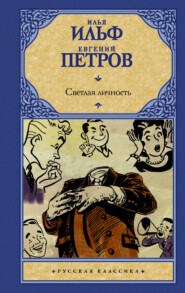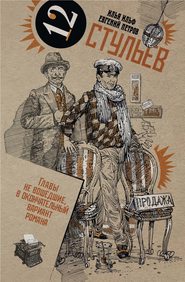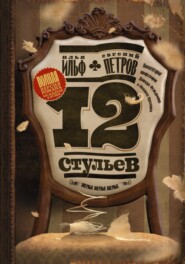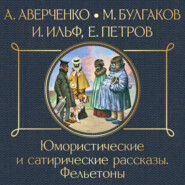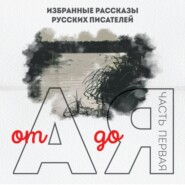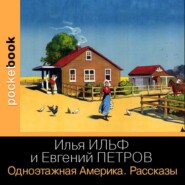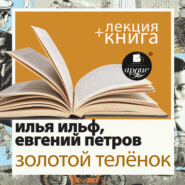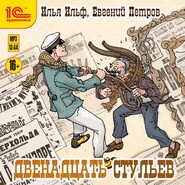По всем вопросам обращайтесь на: info@litportal.ru
(©) 2003-2025.
✖
Одноэтажная Америка / Little Golden America
Автор
Жанр
Серия
Год написания книги
1937
Теги
Настройки чтения
Размер шрифта
Высота строк
Поля
The suitcase with our belongings was placed in the baggage rack located under our back seat. In it were our shirts, handkerchiefs, and, most important of all, letters of introduction – new letters of introduction to cover the entire route. Again, the addressees were professors, people of the theatre, poets, engineers, politicians) governors, and senators.
To the numerous letters received from Dos Passos was attached a long list with the characteristics of each addressee, who he was, what was his occupation, and in what way he could be useful to us.
In brief, we had a lot of recommendational merchandise.
It is high time to keep our promise and write a separate chapter about American roads. They deserve it. Maybe they deserve even more— a whole inspired book.
This was not our first time on an automobile road. Yet, although since then we have become used to munificent highway arrangements, our first impression remains ineradicable. We drove over a white iron and concrete plate, eleven inches thick. This ideally even surface, being slightly rough, had a large coefficient of traction. Rain did not make it slippery. We drove over it with the ease and noiselessness with which a drop of rain runs down glass. Along its length the road was marked with white, thick stripes. Four automobiles could travel down this road at once in both directions. These roads, like the roads of ancient Rome, are built practically for eternity.
Mrs. Adams looked at us appealingly from time to time, but we pretended we did not understand her glances, although we really did. Mrs. Adams wanted to drive faster. But at the time he sold us the machine, the dealer recommended that the first few days it be driven no faster than forty miles an hour. This is necessary so as not to damage the motor before it has time to get under way. Mr. Adams glanced at the speedometer and, seeing the beautiful thin arrow wavering close to the figure 50, became anxious at once:
“No, no, Becky, it’s impossible! It’s impossible! The car is too stiff. You must be very, very careful with it. Isn’t it so, gentlemen?”
Not understanding anything yet about the treatment of automobiles, we merely nodded, without taking our eyes off the white stripes of the road.
Oh, that road! For two months it ran to meet us – concrete, asphalt, or grained, made of gravel and permeated with heavy oil.
It is madness to think that it is possible to drive slowly down an American federal highway. It is not enough to have the desire to be careful. Side by side with your machine pass hundreds of other machines, and thousands push from behind. You meet with tens of thousands passing by, and all of them drive for all they are worth, sweeping you along with them in their satanic flight. All of America speeds somewhere, and evidently never will stop. Steel dogs and birds gleam on the noses of its machines.
Among the millions of automobiles flying from ocean to ocean, we, too, were a grain of dust chased by a petrol storm which has been raging for ever so many years over America.
Our machine raced past rows of petrol stations, each of which had six, eight, or even ten red or yellow pumps. We stopped at one of these to fill our tank.
From a small neat building, in the large glass show window of which could be seen all kinds of automobile greases and cleaning powders, came a man in a cap with a striped top and in striped overalls, the unbuttoned upper part of which revealed a striped collar with a black leather bow tie. Such is the style of mechanics – to wear leather ties. He placed a rubber spigot into the opening of the tank, and the columnlike pump began to count off automatically the number of gallons swallowed by our automobile. Simultaneously, figures jumped out on the counting machine of the little column, indicating the cost of the petrol. With each new gallon the apparatus gave off a melodic ring. This ringing is mere mechanical smartness. One can get along without it.
The tank was filled and we were ready to drive on, but the gentleman in the striped cap and leather necktie did not consider his task completed, although he had done everything that he was supposed to do. He had sold us eleven gallons of petrol, exactly as much as we had asked for. But only then did the great American service begin.
The man from the petrol station lifts the hood of the machine and tests the level of oil in the motor with a calibrated metallic ruler. If it is necessary to add oil, he brings it at once in a handsome tin can or a tall wide-necked bottle.
Then he tests the air pressure in the tires. We carried a pressure of thirty-five pounds in the front tyres and thirty in the rear. He will let out extra air or add as much as is needed.
Then the striped gentleman turns his attention to the windshield. He wipes it with a clean soft rag. If the pane is very dirty, he rubs it with a special powder.
All of this is done quickly but without any fuss. While this work is going on, which does not cost the traveller a single cent, the man at the petrol station will tell you about the road and about the weather you may expect to encounter on your route.
After everything is in order and it seems that nothing else could be added in the way of service rendered to the automobile, the traveller, spoiled by service, begins to imagine that the right front door of his machine does not close tightly enough. Smiling his good wishes, the striped gentleman pulls instruments from his rear pockets – and in two minutes the door is in order.
Besides that, the traveller receives an excellent map of the state printed by the oil companies that sell petrol on the roads. There are road maps published by Standard Oil, Shell, Socony, Conoco, and Esso. All these are beautifully printed on excellent paper. They are easy to read and they give absolutely accurate and the very latest information. It is impossible to receive a map which would tell about the condition of the road the year before. All the maps are up to date, and if there is any serious repair work going on on any of the roads it is indicated on the map. On the reverse side are listed the hotels and tourist homes in which one may spend the night. Even the sights along the road are enumerated.
All this service is given free of charge with the petrol you purchase. The same service is rendered even when you buy only two gallons of it. Difference in treatment is unknown here. A dilapidated Chevrolet or a shining Deusenberg that costs thousands of dollars, the wonder of the automobile show of 1936, will find here the same impartial, rapid, and unruffled service.
In farewell, the attendant of the petrol station told us that he personally would drive the new machine not at the rate of forty miles an hour but at thirty, and not only the first five hundred miles but the first thousand. That would make the motor work ideally in the future. Mrs. Adams was completely overwhelmed by this, and, smiling wryly, held her speed at 28–29 miles.
We men, however, were occupied with calculations. How pleasant it is to be busy when one really has no business to attend to! Our sedate, mouse-coloured Ford showed that it used one gallon of petrol (three and a half litres) every sixteen miles. In the state of New York petrol costs sixteen cents a gallon. That meant that a full tank of fourteen gallons, costing two dollars and twenty-four cents, presented us with the possibility of driving two hundred and twenty-four miles. After converting the miles into kilometres, we discovered that an automobile journey is much less expensive in the United States than in Europe.
This comforting arithmetic helped us endure the insults of the automobiles that passed us. There is something insulting in being passed. In America the passion to pass each other is strongly developed and leads to a greater number of collisions and all the other kinds of road mishaps which in America bear the name of “accident”. Americans travel fast. Every year they travel faster and faster. Every year the roads become better and better, and the automobile motors more and more powerful. They drive fast, daringly, and, on the whole, not too carefully. At any rate, dogs in America have a better understanding of what an automobile highway is than do the automobilists themselves. Wise American dogs never run out on the highway and never race after an automobile with an optimistic bark. They know what that leads to. They will be crushed – and that’s all there is to it.
We stopped for lunch at a roadway restaurant with the sign “Dine and Dance”. We were the only ones in a large, dim room which had a square in the middle for dancing.
Out of small bowls we ate a brownish soup, accompanied by crackers, small salty rusks which justified their name by their incredible crackling when bitten. When we were attacking the large T-bone steaks – beefsteaks of frozen meat with a T-shaped bone in the middle – the owner of the restaurant and entertainment aggregate “Dine and Dance” drove up in an old Ford. He began to drag out of his machine and into the hall bundles of dried cornstalks to decorate the room with them. That evening the youth of the district was to assemble and dance. It was all very pleasant and peaceful – even patriarchal – yet we had driven only a hundred miles away from New York. Only a hundred miles behind us was the noisiest population in the world, while here was quiet, peace, heart-throbbing bucolic flirtation during dances, cornstalks, even flowers.
At the very doors of the quiet restaurant lay the dun concrete of a first-class highway. Again the wound in Mrs. Adams’s heart opened the moment she took the wheel. Thirty miles an hour – and not another mile!
A foreigner, even one who has no command of English, can drive out on an American road without any apprehension. He will never get lost, no matter how strange the country is to him. Even a child, even a deaf-and-dumb person can freely make his way along these roads. They are carefully numbered, and the numbers are met so frequently that it is impossible to make a mistake of direction.
Occasionally, two roads become one for a time. Then the roadway post contains two numbers – the number of the federal road above that of the state road. At times, five, seven, even ten roads come together. Then the quantity of numbers grows, and with it the post on which they are inscribed, so that the indicator begins to look like an ancient Indian totem pole.
There is a great variety of different signposts on the road, but-remarkable distinction! – not one among them is superfluous, not one might distract the attention of the driver. The signs are placed sufficiently low above-ground so that the driver may see them on his right without taking his eyes off the road. They are never conditional and never require any decoding. In America you will never find a mysterious blue triangle in a red square, a sign over which you may wrack your brain for hours.
Most of the road indicators are on round mirrored glasses which at night reflect the glare of automobile lights. Thus, the sign shines of itself. Black inscriptions against a yellow background (these are the most noticeable colours) warn: “Slow,” “School Zone,” “Stop Danger,” “Narrow Bridge,” “Speed Limit 30 Miles,” “Railroad Crossing,” or “Dip-30 Feet Away”—and precisely thirty feet away there will be a rut. However, such an inscription is met with as rarely as the dip itself. At each road crossing stand poles with thick wooden arrows. On the arrows are the names of cities and the mileage to them.
Noisily, and making a baying sound, heavy silver autotanks with milk fled past us. They carry milk for New York’s seven million population. They frighten you to death – these huge milk machines which suddenly appear, approaching with the rapidity of a squall. The tanks are especially grandiose at night when, surrounded by a chain of green and red lanterns, they fly without a stop toward New York. Seven million people want to drink milk, so it must be delivered on time.
Even more imposing are the trucks with special attachments which transport at once three or four new automobiles. At a distance of approximately a thousand miles, delivery by truck costs less than by railroad – so, again a storm descends upon us, this time gleaming with lacquer and nickel. We close our eyes for a second against its unendurable glare, and drive on.
Roads are one of the most remarkable phenomena of American life – of its life and not only of its technique. The United States has hundreds of thousands of miles of so-called highways, roads of high quality, along which regular automobile communication passes. Autobuses race on schedule at the rate of sixty miles per hour, and transportation on them is twice as cheap as by rail.
At any time of day, at any time of year, in the worst possible weather, passenger autobuses race across America. When at night you see a heavy and threatening machine flying across the waste spaces and the deserts, you involuntarily remember the post diligences of Bret Harte run by desperate drivers.
An autobus travels down a gravel highway. It turns large stones over and sucks the small ones after itself. It cannot be late. Where are we? In the state of New Mexico? Faster, faster! The young chauffeur steps on the throttle, Carlsbad, Lordsburg, Las Cruces! The machine fills with noisy wind, and in it the passengers, slumbering in their easy-chairs, suddenly hear the great melody of the American continent.
America is located on a large automobile highway.
When we shut our eyes and try to resurrect in memory the country in which we spent four months, we see before us not Washington with its gardens, columns, and a full collection of monuments, not New York with its skyscrapers, its poverty and its wealth, not San Francisco, with its steep streets and suspension bridges, not hills, not factories, not canyons, but the crossing of two roads and a petrol station against the background of telegraph wires and advertising bill-boards.
11. The Small Town
WE STOPPED in a small town and dined in a drug-store.
It is necessary to explain here the nature of a small American town, and what sort of drug-store it is in which one may dine. That story might be entitled “Pharmacist Without Mysticism, or The Secret of the American Drug-store”.
When America’s big business men, in search of profit, directed their attention to the drug business, they were first of all curious to find out what pharmacists were really doing behind their partitions.
What were they grinding there with their pestles in those thick china mortars, while frowning importantly? Was it medicines? Well, now, how many medicines are there in the world? Let’s say fifty – a hundred – well, a hundred and twenty at the most! A hundred and twenty febrifugal, stimulant, or sedative medicines! Why then prepare them in an amateurish way in drug-stores? They should be produced in mass quantity in factories.
The fact that medicines began to be prepared in factories didn’t make it any easier for the sick man – the medicines were no cheaper. But the pharmacists lost their income. That was taken over by drug manufacturers.
To recoup their lost incomes the outsmarted pharmacists began to sell ice-cream, thirst-quenching waters, small notions, toys, cigarettes, kitchen utensils – in a word, they went in for anything at all.
And so the present-day American drug-store is a large bar with a high counter and revolving grand piano stools before it. Behind the counter, back and forth, run red-headed young men with white sailor caps cocked on the sides of their heads, and coquettish young women, with permanent waves that will last for years, who look like the latest and at the moment the most fashionable movie star. At times they resemble Kay Francis, at other times Greta Garbo; before that they all looked likeGloria Swanson. The girls whip cream, open highly polished nickel taps out of which emerge noisy streams of seltzer water, roast chickens, and throw pieces of ice into a glass with a resounding tinkle.
Although the drug-store has been long ago converted into an eating establishment, its proprietor is nevertheless obliged to be a pharmacist and have a certain baggage of learning, which is insistently indispensable while serving coffee, ice-cream, toasted bread, and other drug-store merchandise.
In the most distant corner of this lively establishment is a small glass closet with little jars, boxes, and bottles. One has to spend at least a half-hour in a drug-store before one notices this little closet. In it are stored the drugs.
There is not one drug-store left in New York where the pharmacist himself prepares medicines. Oh, this remarkable establishment is wrapped in the aureole of medical mysteries! To prove that here medicines are actually prepared by hand, the proprietor of the drug-store displays in the window a pile of old yellowed prescriptions. It all looks like the den of a medieval alchemist. This is no ordinary drug-store. In the latter you can eat, buy a pocket watch or an alarm clock, a pot or a toy; you can even buy or rent a book.
We looked sadly at the menu. Dinner #1, Dinner #2, Dinner #3, Dinner #4—Dinner Number One, Dinner Number Two, Dinner Number Three, Dinner Number Four! Dinner #4 costs twice as much as Dinner #2, but that doesn’t mean that it is twice as good. No! There is simply twice as much of it. If in Dinner #2 a course called “country sausage” consists of three chopped off sausages, then in Dinner #4 there will be six chopped off sausages, but the taste will be exactly the same.
To the numerous letters received from Dos Passos was attached a long list with the characteristics of each addressee, who he was, what was his occupation, and in what way he could be useful to us.
In brief, we had a lot of recommendational merchandise.
It is high time to keep our promise and write a separate chapter about American roads. They deserve it. Maybe they deserve even more— a whole inspired book.
This was not our first time on an automobile road. Yet, although since then we have become used to munificent highway arrangements, our first impression remains ineradicable. We drove over a white iron and concrete plate, eleven inches thick. This ideally even surface, being slightly rough, had a large coefficient of traction. Rain did not make it slippery. We drove over it with the ease and noiselessness with which a drop of rain runs down glass. Along its length the road was marked with white, thick stripes. Four automobiles could travel down this road at once in both directions. These roads, like the roads of ancient Rome, are built practically for eternity.
Mrs. Adams looked at us appealingly from time to time, but we pretended we did not understand her glances, although we really did. Mrs. Adams wanted to drive faster. But at the time he sold us the machine, the dealer recommended that the first few days it be driven no faster than forty miles an hour. This is necessary so as not to damage the motor before it has time to get under way. Mr. Adams glanced at the speedometer and, seeing the beautiful thin arrow wavering close to the figure 50, became anxious at once:
“No, no, Becky, it’s impossible! It’s impossible! The car is too stiff. You must be very, very careful with it. Isn’t it so, gentlemen?”
Not understanding anything yet about the treatment of automobiles, we merely nodded, without taking our eyes off the white stripes of the road.
Oh, that road! For two months it ran to meet us – concrete, asphalt, or grained, made of gravel and permeated with heavy oil.
It is madness to think that it is possible to drive slowly down an American federal highway. It is not enough to have the desire to be careful. Side by side with your machine pass hundreds of other machines, and thousands push from behind. You meet with tens of thousands passing by, and all of them drive for all they are worth, sweeping you along with them in their satanic flight. All of America speeds somewhere, and evidently never will stop. Steel dogs and birds gleam on the noses of its machines.
Among the millions of automobiles flying from ocean to ocean, we, too, were a grain of dust chased by a petrol storm which has been raging for ever so many years over America.
Our machine raced past rows of petrol stations, each of which had six, eight, or even ten red or yellow pumps. We stopped at one of these to fill our tank.
From a small neat building, in the large glass show window of which could be seen all kinds of automobile greases and cleaning powders, came a man in a cap with a striped top and in striped overalls, the unbuttoned upper part of which revealed a striped collar with a black leather bow tie. Such is the style of mechanics – to wear leather ties. He placed a rubber spigot into the opening of the tank, and the columnlike pump began to count off automatically the number of gallons swallowed by our automobile. Simultaneously, figures jumped out on the counting machine of the little column, indicating the cost of the petrol. With each new gallon the apparatus gave off a melodic ring. This ringing is mere mechanical smartness. One can get along without it.
The tank was filled and we were ready to drive on, but the gentleman in the striped cap and leather necktie did not consider his task completed, although he had done everything that he was supposed to do. He had sold us eleven gallons of petrol, exactly as much as we had asked for. But only then did the great American service begin.
The man from the petrol station lifts the hood of the machine and tests the level of oil in the motor with a calibrated metallic ruler. If it is necessary to add oil, he brings it at once in a handsome tin can or a tall wide-necked bottle.
Then he tests the air pressure in the tires. We carried a pressure of thirty-five pounds in the front tyres and thirty in the rear. He will let out extra air or add as much as is needed.
Then the striped gentleman turns his attention to the windshield. He wipes it with a clean soft rag. If the pane is very dirty, he rubs it with a special powder.
All of this is done quickly but without any fuss. While this work is going on, which does not cost the traveller a single cent, the man at the petrol station will tell you about the road and about the weather you may expect to encounter on your route.
After everything is in order and it seems that nothing else could be added in the way of service rendered to the automobile, the traveller, spoiled by service, begins to imagine that the right front door of his machine does not close tightly enough. Smiling his good wishes, the striped gentleman pulls instruments from his rear pockets – and in two minutes the door is in order.
Besides that, the traveller receives an excellent map of the state printed by the oil companies that sell petrol on the roads. There are road maps published by Standard Oil, Shell, Socony, Conoco, and Esso. All these are beautifully printed on excellent paper. They are easy to read and they give absolutely accurate and the very latest information. It is impossible to receive a map which would tell about the condition of the road the year before. All the maps are up to date, and if there is any serious repair work going on on any of the roads it is indicated on the map. On the reverse side are listed the hotels and tourist homes in which one may spend the night. Even the sights along the road are enumerated.
All this service is given free of charge with the petrol you purchase. The same service is rendered even when you buy only two gallons of it. Difference in treatment is unknown here. A dilapidated Chevrolet or a shining Deusenberg that costs thousands of dollars, the wonder of the automobile show of 1936, will find here the same impartial, rapid, and unruffled service.
In farewell, the attendant of the petrol station told us that he personally would drive the new machine not at the rate of forty miles an hour but at thirty, and not only the first five hundred miles but the first thousand. That would make the motor work ideally in the future. Mrs. Adams was completely overwhelmed by this, and, smiling wryly, held her speed at 28–29 miles.
We men, however, were occupied with calculations. How pleasant it is to be busy when one really has no business to attend to! Our sedate, mouse-coloured Ford showed that it used one gallon of petrol (three and a half litres) every sixteen miles. In the state of New York petrol costs sixteen cents a gallon. That meant that a full tank of fourteen gallons, costing two dollars and twenty-four cents, presented us with the possibility of driving two hundred and twenty-four miles. After converting the miles into kilometres, we discovered that an automobile journey is much less expensive in the United States than in Europe.
This comforting arithmetic helped us endure the insults of the automobiles that passed us. There is something insulting in being passed. In America the passion to pass each other is strongly developed and leads to a greater number of collisions and all the other kinds of road mishaps which in America bear the name of “accident”. Americans travel fast. Every year they travel faster and faster. Every year the roads become better and better, and the automobile motors more and more powerful. They drive fast, daringly, and, on the whole, not too carefully. At any rate, dogs in America have a better understanding of what an automobile highway is than do the automobilists themselves. Wise American dogs never run out on the highway and never race after an automobile with an optimistic bark. They know what that leads to. They will be crushed – and that’s all there is to it.
We stopped for lunch at a roadway restaurant with the sign “Dine and Dance”. We were the only ones in a large, dim room which had a square in the middle for dancing.
Out of small bowls we ate a brownish soup, accompanied by crackers, small salty rusks which justified their name by their incredible crackling when bitten. When we were attacking the large T-bone steaks – beefsteaks of frozen meat with a T-shaped bone in the middle – the owner of the restaurant and entertainment aggregate “Dine and Dance” drove up in an old Ford. He began to drag out of his machine and into the hall bundles of dried cornstalks to decorate the room with them. That evening the youth of the district was to assemble and dance. It was all very pleasant and peaceful – even patriarchal – yet we had driven only a hundred miles away from New York. Only a hundred miles behind us was the noisiest population in the world, while here was quiet, peace, heart-throbbing bucolic flirtation during dances, cornstalks, even flowers.
At the very doors of the quiet restaurant lay the dun concrete of a first-class highway. Again the wound in Mrs. Adams’s heart opened the moment she took the wheel. Thirty miles an hour – and not another mile!
A foreigner, even one who has no command of English, can drive out on an American road without any apprehension. He will never get lost, no matter how strange the country is to him. Even a child, even a deaf-and-dumb person can freely make his way along these roads. They are carefully numbered, and the numbers are met so frequently that it is impossible to make a mistake of direction.
Occasionally, two roads become one for a time. Then the roadway post contains two numbers – the number of the federal road above that of the state road. At times, five, seven, even ten roads come together. Then the quantity of numbers grows, and with it the post on which they are inscribed, so that the indicator begins to look like an ancient Indian totem pole.
There is a great variety of different signposts on the road, but-remarkable distinction! – not one among them is superfluous, not one might distract the attention of the driver. The signs are placed sufficiently low above-ground so that the driver may see them on his right without taking his eyes off the road. They are never conditional and never require any decoding. In America you will never find a mysterious blue triangle in a red square, a sign over which you may wrack your brain for hours.
Most of the road indicators are on round mirrored glasses which at night reflect the glare of automobile lights. Thus, the sign shines of itself. Black inscriptions against a yellow background (these are the most noticeable colours) warn: “Slow,” “School Zone,” “Stop Danger,” “Narrow Bridge,” “Speed Limit 30 Miles,” “Railroad Crossing,” or “Dip-30 Feet Away”—and precisely thirty feet away there will be a rut. However, such an inscription is met with as rarely as the dip itself. At each road crossing stand poles with thick wooden arrows. On the arrows are the names of cities and the mileage to them.
Noisily, and making a baying sound, heavy silver autotanks with milk fled past us. They carry milk for New York’s seven million population. They frighten you to death – these huge milk machines which suddenly appear, approaching with the rapidity of a squall. The tanks are especially grandiose at night when, surrounded by a chain of green and red lanterns, they fly without a stop toward New York. Seven million people want to drink milk, so it must be delivered on time.
Even more imposing are the trucks with special attachments which transport at once three or four new automobiles. At a distance of approximately a thousand miles, delivery by truck costs less than by railroad – so, again a storm descends upon us, this time gleaming with lacquer and nickel. We close our eyes for a second against its unendurable glare, and drive on.
Roads are one of the most remarkable phenomena of American life – of its life and not only of its technique. The United States has hundreds of thousands of miles of so-called highways, roads of high quality, along which regular automobile communication passes. Autobuses race on schedule at the rate of sixty miles per hour, and transportation on them is twice as cheap as by rail.
At any time of day, at any time of year, in the worst possible weather, passenger autobuses race across America. When at night you see a heavy and threatening machine flying across the waste spaces and the deserts, you involuntarily remember the post diligences of Bret Harte run by desperate drivers.
An autobus travels down a gravel highway. It turns large stones over and sucks the small ones after itself. It cannot be late. Where are we? In the state of New Mexico? Faster, faster! The young chauffeur steps on the throttle, Carlsbad, Lordsburg, Las Cruces! The machine fills with noisy wind, and in it the passengers, slumbering in their easy-chairs, suddenly hear the great melody of the American continent.
America is located on a large automobile highway.
When we shut our eyes and try to resurrect in memory the country in which we spent four months, we see before us not Washington with its gardens, columns, and a full collection of monuments, not New York with its skyscrapers, its poverty and its wealth, not San Francisco, with its steep streets and suspension bridges, not hills, not factories, not canyons, but the crossing of two roads and a petrol station against the background of telegraph wires and advertising bill-boards.
11. The Small Town
WE STOPPED in a small town and dined in a drug-store.
It is necessary to explain here the nature of a small American town, and what sort of drug-store it is in which one may dine. That story might be entitled “Pharmacist Without Mysticism, or The Secret of the American Drug-store”.
When America’s big business men, in search of profit, directed their attention to the drug business, they were first of all curious to find out what pharmacists were really doing behind their partitions.
What were they grinding there with their pestles in those thick china mortars, while frowning importantly? Was it medicines? Well, now, how many medicines are there in the world? Let’s say fifty – a hundred – well, a hundred and twenty at the most! A hundred and twenty febrifugal, stimulant, or sedative medicines! Why then prepare them in an amateurish way in drug-stores? They should be produced in mass quantity in factories.
The fact that medicines began to be prepared in factories didn’t make it any easier for the sick man – the medicines were no cheaper. But the pharmacists lost their income. That was taken over by drug manufacturers.
To recoup their lost incomes the outsmarted pharmacists began to sell ice-cream, thirst-quenching waters, small notions, toys, cigarettes, kitchen utensils – in a word, they went in for anything at all.
And so the present-day American drug-store is a large bar with a high counter and revolving grand piano stools before it. Behind the counter, back and forth, run red-headed young men with white sailor caps cocked on the sides of their heads, and coquettish young women, with permanent waves that will last for years, who look like the latest and at the moment the most fashionable movie star. At times they resemble Kay Francis, at other times Greta Garbo; before that they all looked likeGloria Swanson. The girls whip cream, open highly polished nickel taps out of which emerge noisy streams of seltzer water, roast chickens, and throw pieces of ice into a glass with a resounding tinkle.
Although the drug-store has been long ago converted into an eating establishment, its proprietor is nevertheless obliged to be a pharmacist and have a certain baggage of learning, which is insistently indispensable while serving coffee, ice-cream, toasted bread, and other drug-store merchandise.
In the most distant corner of this lively establishment is a small glass closet with little jars, boxes, and bottles. One has to spend at least a half-hour in a drug-store before one notices this little closet. In it are stored the drugs.
There is not one drug-store left in New York where the pharmacist himself prepares medicines. Oh, this remarkable establishment is wrapped in the aureole of medical mysteries! To prove that here medicines are actually prepared by hand, the proprietor of the drug-store displays in the window a pile of old yellowed prescriptions. It all looks like the den of a medieval alchemist. This is no ordinary drug-store. In the latter you can eat, buy a pocket watch or an alarm clock, a pot or a toy; you can even buy or rent a book.
We looked sadly at the menu. Dinner #1, Dinner #2, Dinner #3, Dinner #4—Dinner Number One, Dinner Number Two, Dinner Number Three, Dinner Number Four! Dinner #4 costs twice as much as Dinner #2, but that doesn’t mean that it is twice as good. No! There is simply twice as much of it. If in Dinner #2 a course called “country sausage” consists of three chopped off sausages, then in Dinner #4 there will be six chopped off sausages, but the taste will be exactly the same.






